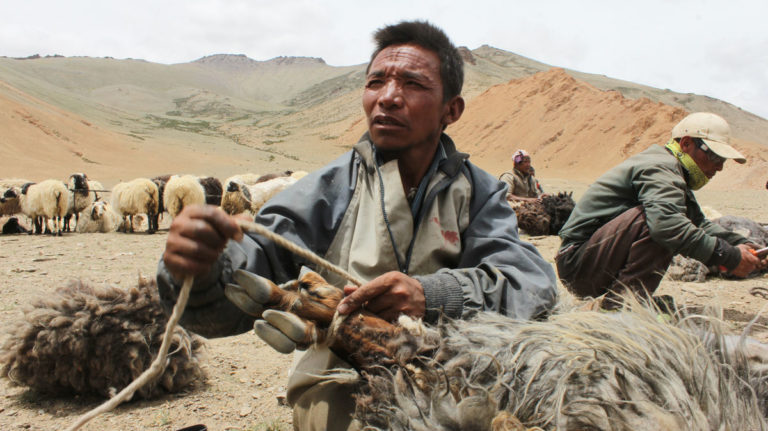India: SECURE-Himalayas

| PROJECT TITLE | Securing Livelihoods, Conservation, Sustainable Use and Restoration of High Range Himalayan Ecosystems (SECURE-Himalayas)> |
|---|---|
| COUNTRY | India |
| EXECUTING PARTNER | Indian Ministry of Environment, Forests and Climate Change |
| PROJECT PERIOD | 2017-2023 |
| GEF FUNDING | $11,544,14 |
| CO-FINANCING | $40,343,000 |
SECURING SUSTAINABLE LIVELIHOODS
The Changpas people are high-altitude pastoralists of Ladakh and the State of Jammu and Kashmir. Some among them are still nomadic, moving with their yaks and goats from the wintering grounds of Hanley Valley up to the summer pastures near the village of Lato, high in the Indian Himalayas. This territory—known as the Changthang landscape—is characterized by extensive plateau, lake and river basins, and rolling hills. Pastoralism dominates this and the three other high altitude landscapes targeted by this project—Lahul-Pangi (Himachal Pradesh), Gangothri Govind (Uttarakhand) and Kanchenjunga-Upper Teesta-Tso Lhamu (Sikkim).
Demand for livestock and competition for pasture has grown with an upsurge in human population. In the absence of other livelihood options, local communities have steadily increased the number of domestic livestock grazing on the fragile soils and sparse vegetation of the alpine landscape, leading to loss of productivity and severe degradation of the very ecosystems on which their livelihoods depend.
The native wildlife of the region depends on these same natural resources. As plant productivity dwindles, so does the population of wild herbivores that feed on them, increasing the chances that snow leopards and other predators will hunt domestic livestock in order to survive. Retaliatory killing of predators to protect livestock disrupts the balance of the food web, intensifying ecosystem degradation and the losses experienced by families working to make a living in this challenging environment.
To address this negative cycle, in addition to larger landscape mapping and management initiatives at the regional level, the local-level aspect of this project focuses heavily on securing local livelihoods for men and women that reduce dependence on the delicately-balanced snow leopard ecosystems. The project will achieve this through a three-pronged strategy of enhancing existing livelihoods, providing alternate and new livelihood options and supporting skill-based employment opportunities.
The project will boost access to technical services and improved technology and practices that can deliver significant enhancements to current livelihoods, such as on-farm agro-biodiversity management, integrated pest management and improved seed, as well as encouraging the revival of traditional pastoral practices, such as rotational grazing.
Diversification of the agricultural economy provides new livelihood options, such as fruit and jam production and bee-keeping. Innovative technologies further improve commodity prices, such as green energy (micro-hydro, solar) for community-based processing, drying and cooking, or improved storage, packing, and transport methods to reduce product damage. Along with training in sustainable harvesting practices, these technologies also enable communities to benefit from their rich traditional knowledge of wild medicinal and aromatic plants, enabling them to directly process and sell their products rather than accepting a meager share of the plants’ value from middlemen who dominate the trade.
Finally, the project will promote skill development for non-farm employment in tourism and related sectors. Capacity building in natural resources management will also create employment opportunities through community-based snow leopard landscape management programmes in partnership with the government.
In addition to many female-headed households, in herding societies, all women play a large role in livestock rearing and management, making gender-sensitive planning and inclusive interventions critical to project success. Following a participatory planning process, the women and men of project communities will develop micro-plans for livelihood diversification.
Connecting these communities with appropriate government- and partner-funded livelihood and enterprise development initiatives that align with the micro-plans then becomes central to the project’s implementation. In this way, across the four landscapes around 37,000-40,000 farmers and pastoralists will directly benefit from project efforts to secure a diverse range of livelihood options that decrease dependence on limited natural resources, offset losses and reduce opportunity costs, making effective snow leopard conservation beneficial for local communities like the Changpas.


